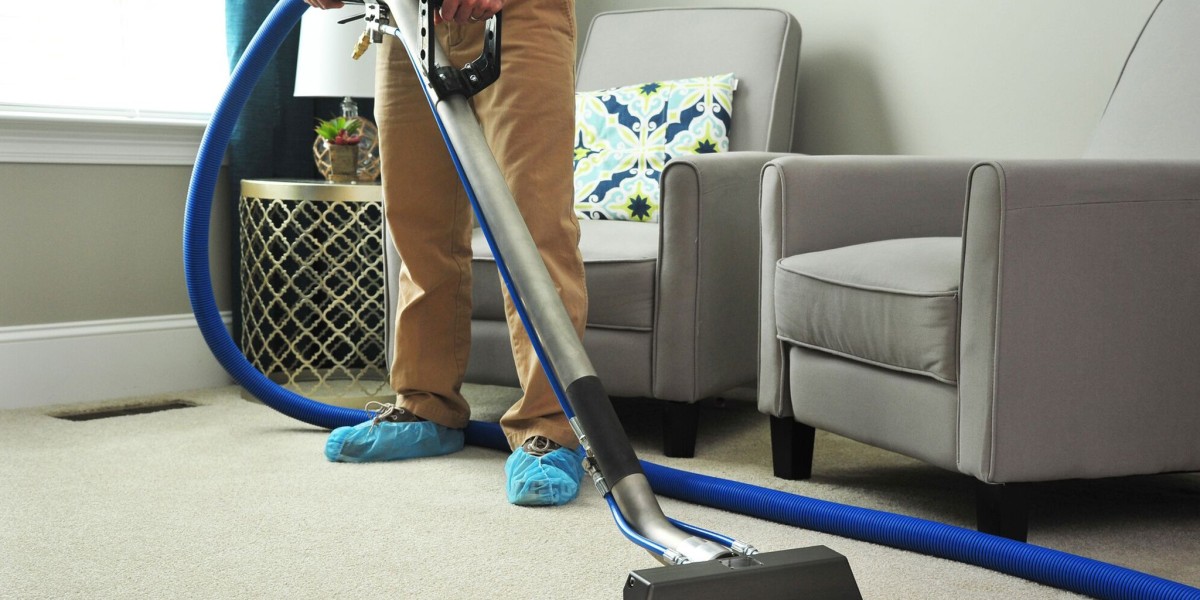Bifold Door Repair: A Comprehensive Guide to Fixing Common Issues
Bifold doors, also known as folding doors, are a popular choice for house owners aiming to maximize area and create smooth shifts in between spaces or indoor and outdoor living areas. Their elegant, space-saving design enables large openings without the swing area needed by conventional hinged doors. From closets and pantries to outdoor patios and space dividers, bifold doors provide versatility and visual appeal. Nevertheless, like any mechanical part in a home, bifold doors can experience wear and tear with time, resulting in various functional problems. Thankfully, numerous typical bifold door problems are workable with some fundamental DIY abilities and the right guidance.
This short article serves as a thorough guide to understanding and attending to typical bifold door repairs. We will explore typical concerns, equip you with the required tools and understanding, and walk you through step-by-step repair procedures. By comprehending the mechanics of bifold doors and learning basic repair techniques, house owners can extend the lifespan of their doors and prevent pricey professional service calls.

Understanding Common Bifold Door Problems
Before diving into repairs, it's crucial to identify the source of the problem. Bifold doors, while reasonably easy in style, rely on numerous parts working in consistency. When one part malfunctions, it can affect the entire system. Here are a few of the most frequent problems homeowners experience with bifold doors:
- Hanging or Sticking Doors: This is possibly the most common problem. Doors may get stuck while opening or closing, need extreme force to move, or scrape versus the frame or floor. This can be caused by misaligned hinges, distorted doors, or problems with the track and roller system.
- Misaligned Doors: Even when closed, bifold doors should sit flush and aligned. Misalignment can manifest as spaces between door panels, uneven spacing from the frame, or a failure to latch appropriately. This can result from loose hinges, warped doors, or shifted tracks.
- Damaged or Broken Hardware: The rollers, hinges, pivots, and tracks are the workhorses of a bifold door system. Gradually and with frequent usage, these elements can wear out, break, or become damaged. Damaged rollers can avoid smooth moving, while harmed hinges can cause sticking and misalignment. Damaged tracks can obstruct roller movement and result in jerky operation.
- Loose Screws and Fittings: Vibrations from regular usage can loosen screws and fittings that hold the hinges, tracks, and other hardware in place. Loose parts can result in instability, misalignment, and noisy operation.
- Distorted Doors: Exposure to wetness and temperature variations can cause wood bifold doors to warp. Distorted doors can be difficult to close appropriately, may rub versus the frame, and can create spaces.
Vital Tools and Materials for Bifold Door Repair
Having the right tools and products on hand will make the repair process significantly smoother and more effective. Here's a list of common products you might require:
- Screwdrivers: A set of Phillips head and flathead screwdrivers of different sizes is important for tightening and loosening up screws.
- Drill/Driver: For more persistent screws or for setting up brand-new hardware, a drill/driver can be invaluable. Guarantee you have a variety of drill bits and screwdriver bits.
- Hammer: A hammer can be valuable for gently tapping elements into place or for getting rid of stubborn pins.
- Pliers: Pliers are beneficial for grasping small parts, bending metal components, and removing pins.
- Level: A level is vital for ensuring doors are appropriately aligned vertically and horizontally.
- Measuring tape: For precise measurements when replacing parts or adjusting door positions.
- Wood Shims: Shims are slices of wood utilized for leveling and lining up doors within the frame.
- Lubricant (Silicone Spray or Dry Lube): Lubricant can significantly improve the smooth operation of rollers and hinges.
- Replacement Rollers, Hinges, and Tracks: Depending on the problem, you may require to purchase replacement parts. It's often helpful to identify the manufacturer and design of your bifold doors to guarantee you get compatible replacements.
- Wood Filler or Epoxy (for wooden doors): For fixing small damage to wooden doors, such as broken corners or screw holes.
- Shatterproof Glass and Gloves: Always prioritize safety when carrying out DIY jobs.
Step-by-Step bifold door repair guide [click through the next site]
Now, let's look into the useful steps for repairing common bifold door concerns:
1. Resolving Hanging or Sticking Doors:
- Inspection: Begin by carefully observing where the door is sticking or hanging. Is it rubbing against the top, bottom, or side of the frame?
- Lubrication: Often, a basic lubrication of the rollers and track can resolve sticking issues. Apply silicone spray or dry lube to all moving parts, including rollers, hinges, and the top and bottom tracks. Open and close the door a number of times to disperse the lubricant.
- Hinge Adjustment: If lubrication doesn't fix the concern, inspect the hinges. Loose hinges can trigger doors to droop. Tighten any loose hinge screws. If the screws are stripped, you might require to use longer screws or wood filler in the screw holes before re-screwing.
- Track Adjustment: In some cases, the track itself might be somewhat misaligned. Check if the track is firmly secured to the frame. If it's loose, tighten up the screws. Small track misalignment can in some cases be fixed by carefully tapping the track into location with a hammer and block of wood.
- Door Warping: If the door is distorted, minor warping may be addressed by thoroughly aligning it utilizing clamps and weights. Nevertheless, badly distorted doors might need to be replaced.
2. Fixing Misaligned Doors:
- Hinge Adjustment (Lateral Alignment): Misalignment can frequently be fixed by adjusting the hinges. Loosen the hinge screws slightly and carefully move the door panel left or right to accomplish better positioning. Retighten the screws when lined up.
- Shims (Vertical Alignment): If the door is unequal vertically, you can use shims. Unlock and place shims behind the hinges on the lower panel to raise it or behind the depend upon the upper panel to decrease it. Try out shim positioning and thickness up until the doors are aligned, then tighten up the hinge screws securely.
- Leveling the Frame: In rare cases, the door frame itself may be out of level. Utilize a level to examine the frame. If it's not level, you might require to change the frame itself, which can be a more complicated task and may require expert support.
3. Replacing Damaged Hardware (Rollers, Hinges, Tracks):
- Roller Replacement:
- Open the bifold door and find the harmed roller.
- Depending upon the style, you may need to get rid of a retaining clip or screw to launch the old roller.
- Carefully get rid of the old roller.
- Place the new roller, ensuring it is appropriately seated and secured.
- Check the door operation.
- Hinge Replacement:
- Open the door and identify the harmed hinge.
- Eliminate the screws holding the hinge to both door panels and the frame.
- Get rid of the old hinge.
- Position the brand-new hinge in the same location.
- Protect the new hinge with screws.
- Check the door operation.
- Track Replacement: Replacing a track is a more involved process and is typically just required if the track is severely harmed or bent.
- Eliminate the bifold doors from the track.
- Loosen the old track from the frame.
- Measure and cut the new track to the appropriate length, if needed.
- Position the brand-new track and protect it to the frame with screws.
- Reinstall the bifold doors.
- Evaluate the door operation.
4. Tightening Loose Screws and Fittings:
- Regular Inspection: Periodically examine all screws and fittings on your bifold doors.
- Tightening up: Use a screwdriver to tighten any loose screws.
- Stripped Screw Holes: If screws are regularly loosening up or stripped, you can utilize wood filler (for wooden doors) or epoxy to repair the screw holes. Fill the hole, let it dry, pre-drill a pilot hole, and then re-install the screw. Alternatively, usage slightly longer or larger screws to get a better grip.
Routine Maintenance for Bifold Doors
Preventative upkeep is essential to prolonging the life of your bifold doors and minimizing the requirement for repairs. Here are some important upkeep tips:
- Regular Cleaning: Keep the tracks and rollers clean from dust, particles, and pet hair. Vacuum or wipe down tracks routinely.
- Lubrication: Lubricate rollers and hinges at least two times a year or whenever you observe the doors starting to stick or squeak.
- Inspect Hardware Periodically: Check for loose screws, worn rollers, or harmed hinges during your routine home upkeep checks.
- Gentle Operation: Avoid slamming or requiring bifold doors. Run them efficiently and carefully to avoid unneeded tension on the hardware.
When to Call a Professional
While lots of bifold door problems can be dealt with DIY, there are situations where it's finest to call a professional handyman or door expert:
- Significant Door Warping: Severely warped doors may be beyond DIY repair and require professional replacement.
- Complex Track Issues: If the track is considerably bent, damaged, or if you suspect structural problems with the frame, professional knowledge is suggested.
- Lack of DIY Experience: If you are uneasy with DIY repairs or do not have the required tools, looking for professional help is always a safe and practical option.
- Time Constraints: If you are short on time or choose to have the repair done quickly and efficiently, a specialist can handle the task.
Conclusion
Bifold doors are an important addition to any home, offering space efficiency and aesthetic appeal. Understanding their mechanics and typical issues empowers property owners to carry out fundamental repairs and maintenance, ensuring their longevity and smooth operation. By following the actions outlined in this guide, and with a little persistence and the right tools, you can effectively attend to most bifold door issues and keep your doors operating perfectly for many years to come. Keep in mind, regular upkeep and prompt attention to small concerns can prevent larger problems and save you time and money in the long run.
Frequently Asked Questions (FAQs) about Bifold Door Repair
Q: Why are my bifold doors sticking?A: Sticking bifold doors are often brought on by lack of lubrication, misaligned hinges, or particles in the tracks and rollers.
Q: How often should I lube bifold door rollers?A: It's advised to lubricate bifold door rollers at least twice a year or whenever you discover the doors ending up being less smooth to run.
Q: Can I replace bifold door rollers myself?A: Yes, replacing bifold door rollers is a relatively simple DIY job. Guarantee you buy compatible replacement rollers for your door type.
Q: My bifold doors are misaligned even when closed. How can I repair this?A: Misalignment can typically be corrected by adjusting the hinges. Attempt loosening hinge screws and gently shifting door panels for much better alignment, or use shims behind hinges to change vertical positioning.

Q: What type of lube is best for bifold door rollers?A: Silicone spray or dry lubricant are outstanding choices for bifold door rollers as they are less most likely to draw in dust and particles compared to oil-based lubes.
Q: When should I consider changing my bifold doors instead of repairing them?A: Consider changing bifold doors if they are significantly warped, thoroughly harmed, or if the expense of repairs surpasses the expense of new doors, especially if they are old and worn out.








